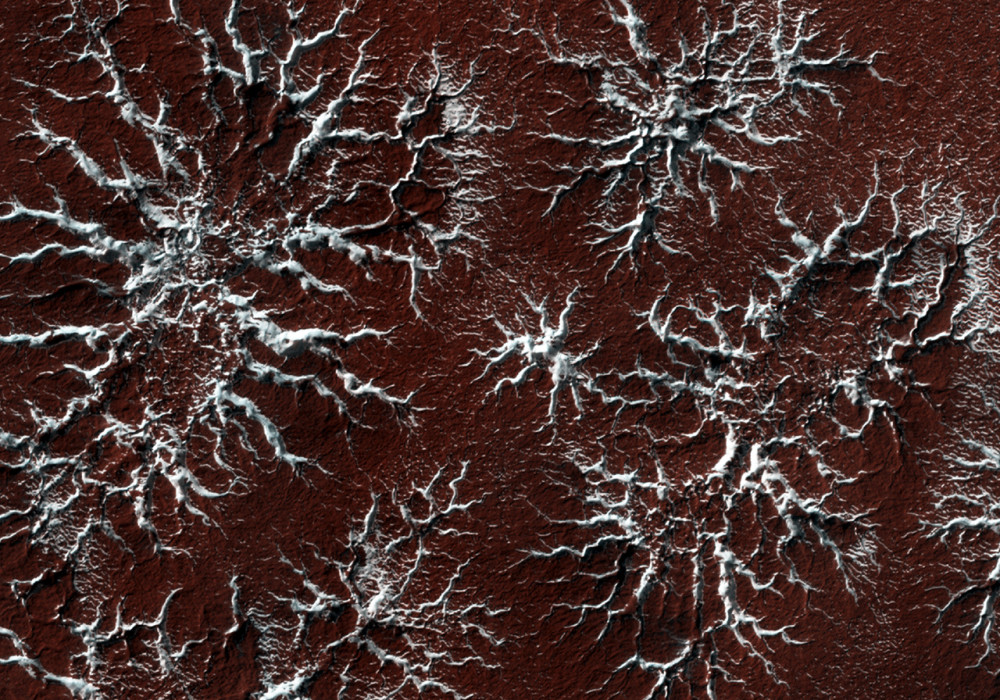Have you ever played with dry ice (with leather gloves on of course!)? Perhaps you’ve made Halloween punch? Set a spooky scene? The fun comes from the fact that dry ice goes directly from solid to vapor, unlike water ice which melts into liquid when it gets warm.
On Mars the seasonal polar caps are composed of dry ice (carbon dioxide). In the springtime as the sun shines on the ice, it turns from solid to gas and causes erosion of the surface. I enjoy the incredible diversity of forms that the erosion takes, and am studying the factors that give us “spiders”, “caterpillars”, or “starbursts”, all colloquial words for what we rigorously name “araneiform” terrain.
This particular example shows eroded channels filled with bright ice, in contrast to the muted red of the underlying ground. In the summer the ice will disappear into the atmosphere, and we will see just the channels of ghostly spiders carved in the surface. This is truly Martian terrain—this type of erosion does not take place anywhere naturally on Earth because our climate is too warm.
Written by: Candy Hansen (6 April 2011)
More info and image formats at http://hirise.lpl.arizona.edu/ESP_020914_0930
Image: NASA/JPL/University of Arizona
